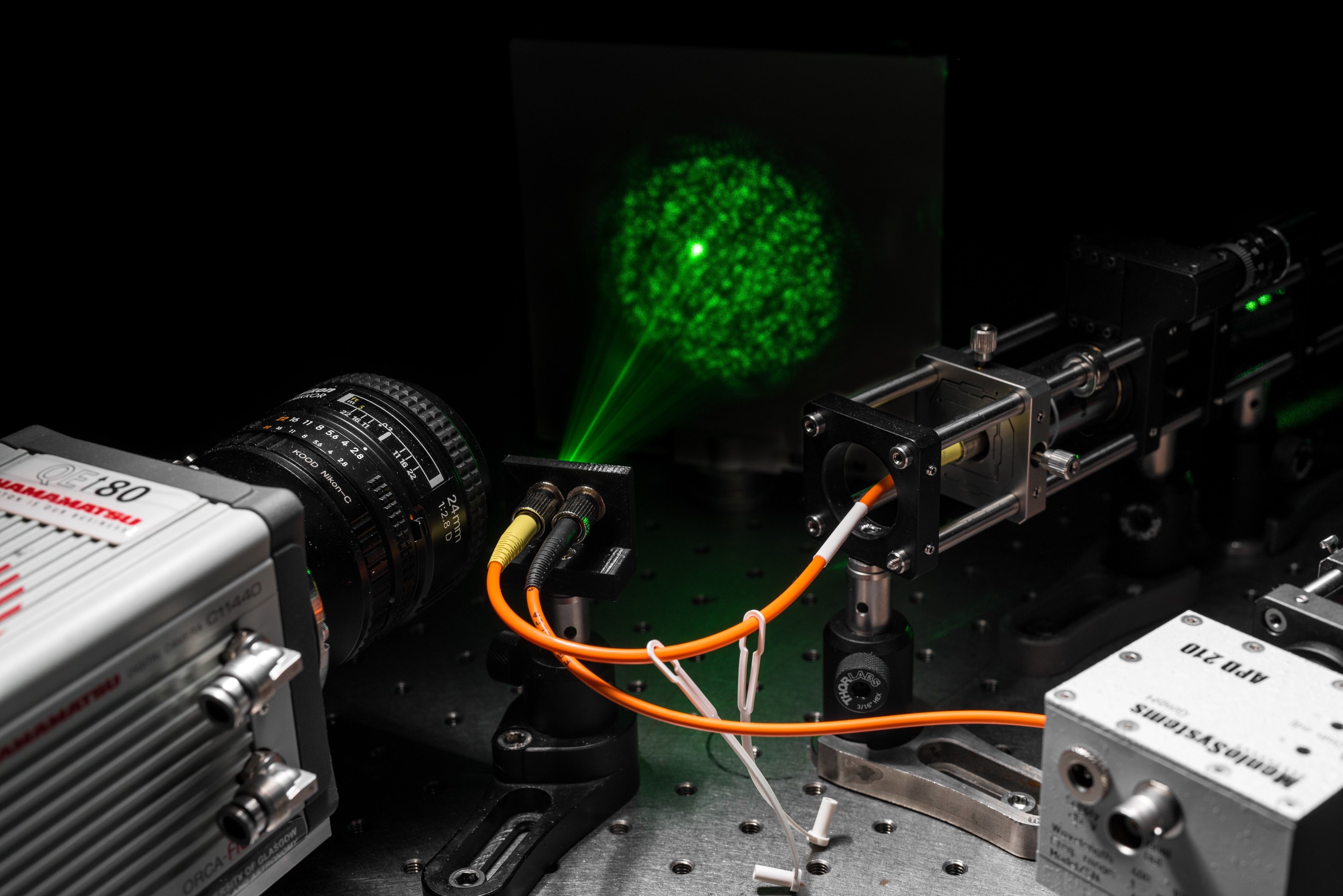Single Fibre Imager
Imaging through an optical fibre, the width of a human hair
Optical fibres have revolutionised our data-centric world. It is the highway of our internet, television, and communication needs. Light is often used to transfer data, but not an image.
Traditionally to send an image inherently through fibres, such as in endoscopes, bundles of many thousands of optical fibres are needed, with one fibre for every pixel in the image. QuantIC’s innovation has been to project a video through a single fibre.
Normally, when light shines through a single optical fibre it is scrambled, making the image unrecognisable. To resolve this, the team at the University of Glasgow reverse this process and use carefully shaped light at the input to create a single spot at the output. That spot of light is then rapidly scanned across the scene and captures each pixel of detail for a camera to record.
The technology has been demonstrated for a range of wavelengths allowing infrared and visible inspection or non-visible and eye-safe optics. Even 3D LiDAR imaging has been developed when using a pulsed laser input.

Single Fibre Imager
Peter Meikhal, University of Glasgow, discusses the Single Fibre Imager technology and its potential applications for healthcare, defence and security and the nuclear industry.
Key benefits
- 3D imaging capability
- Millimetric resolution and real-time frame rates
- Non-invasive, ultra-low profile
- Robust fibre delivery for extreme, and highly sensitive environments.
- Cost-saving and removes need for access points.
- Customise to a range of needs
Applications
- Healthcare - Medical diagnosis and Surgery
- Defence and security – Covert Imaging
- Manufacturing and Energy - Non-destructive Testing (NDT)
- Nuclear and Civils – Monitoring and Decommissioning

Healthcare and Defence & Security
Meet our investigator
Professor Miles Padgett is Principal Investigator of QuantIC, Interim Executive Chair of the Engineering and Physical Sciences Research Council (EPSRC) and the Kelvin Chair of Natural Philosophy at the University of Glasgow with research interests spanning optics and quantum enhanced imaging and sensing.

